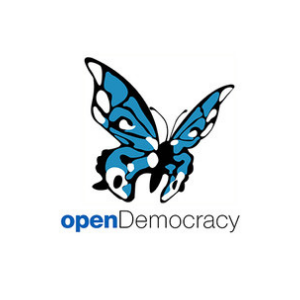The future of humanitarian action to be decided in Medellin
In 2013 Medellin overtook New York and Tel Aviv to win the vaunted title of City of the Year. Supported by the Wall Street Journal and Citi Bank, the competition rewards innovative cities that register major improvements in the quality of life of their residents and public policy innovations. And Medellin has plenty of both. Yet behind this impressive title is another, more sinister reality, one that occasionally forces its way to the surface in terrifying ways. In spite of remarkable improvements in safety and security over the last decade, Medellin is suffering from a silent crisis. And the humanitarian world is starting to take note.
Described in the news as a “gang war” or “urban conflict”, Medellin´s violence problem is in fact constitutive of a new kind of menace facing cities worldwide. As the planet urbanizes – by 2050 more than two thirds of all people will live in cities – many fast-growing urban centres are confronted with similar challenges. In fact, what is going on in Medellin may be presaging a wider phenomenon around the world wherein sprawling cities struggle to provide public security for their residents. Understanding the dynamics of insecurity in Colombia´s second city, and the ways in which violence can be prevented and reduced, will have implications that resonate far beyond the region.
A recurring question asked by aid workers contemplating action in cities like Medellin is whether the situation is in fact an “armed conflict”. A new study produced by CERAC and the Catholic University of Rio de Janeiro asks precisely this question. This decision is typically based on the “intensity” and “organization” of violence. Intensity refers to the frequency and severity of violent deaths, displacement and victimization while organization speaks to the command and control of armed groups. What we find is that Medellin meets the intensity criteria, but does not exhibit the threshold of organization that would tip it into full-fledged conflict. Instead, the city is categorized as “another situation of violence” by humanitarian groups. This offers little comfort to those suffering the impacts of insecurity on a daily basis.
Some organizations including the International Committee of the Red Cross (ICRC) feel the situation in Medellin is so grim that humanitarian assistance is warranted. And they have a point. The intensity of lethal violence in Medellin equals that of other war zones around the world. For example, in 2011, the latest date for which accurate data is available, there were some 70 homicides per 100,000, one of the highest rates in all of Latin America. Much of the violence, however, is invisible in terms of forced displacement, rape, extortion, and far-reaching constraints on mobility in many neighbourhoods, or Comunas. While not reaching the peaks experienced during the cartel conflicts of the 1990s, the situation meets the threshold of war according to most interpretations of international law.
Yet at the same time, the perpetrators of violence in Medellin are highly disorganized. Our report detects at least 300 distinct groups of “combos”, “bands”, and “oficinas de cobro” among others. And while these armed actors are often involved in confrontations between one another, public security forces, and civilians, they exhibit weak internal controls. As a result, violence is dynamic, episodic, and volatile, and not as regulated as in conventional conflicts such as those between the FARC and the Colombian armed forces. While violence has remained relatively steady over time, it has nevertheless started to transform, mutate, and diversify. And while deadly, these groups are not as organized as armed groups typically encountered on battlefields around the world.
All of this generates a tricky situation when thinking about protecting civilians in Medellin, or indeed other cities confronted with similar challenges. International aid agencies are frantically attempting to draw up operational guidelines and learn lessons from places like Medellin, but also Rio de Janeiro, Port-au-Prince and Guatemala where some have quietly launched small-scale operations. What are the rules for negotiating with criminal gangs who impose their own rule of law in poor Comunas? What protection is afforded to relief workers when the laws of war do not apply? And what does the very presence of international humanitarian aid agencies say about the stability of a global city like Medellin?
Whatever the answer, the future of international humanitarian action will be decided in these new types of situations that are neither war nor peace. As the number of ongoing formal wars continues its decline around the world, what takes place in Medellin will surely play a role in defining the landscapes of civilian protection in the coming decades.
Por Robert Muggah e Claudia Navas Caputo
Artigo de opinião publicado em 13 de junho de 2013
Open Democracy



